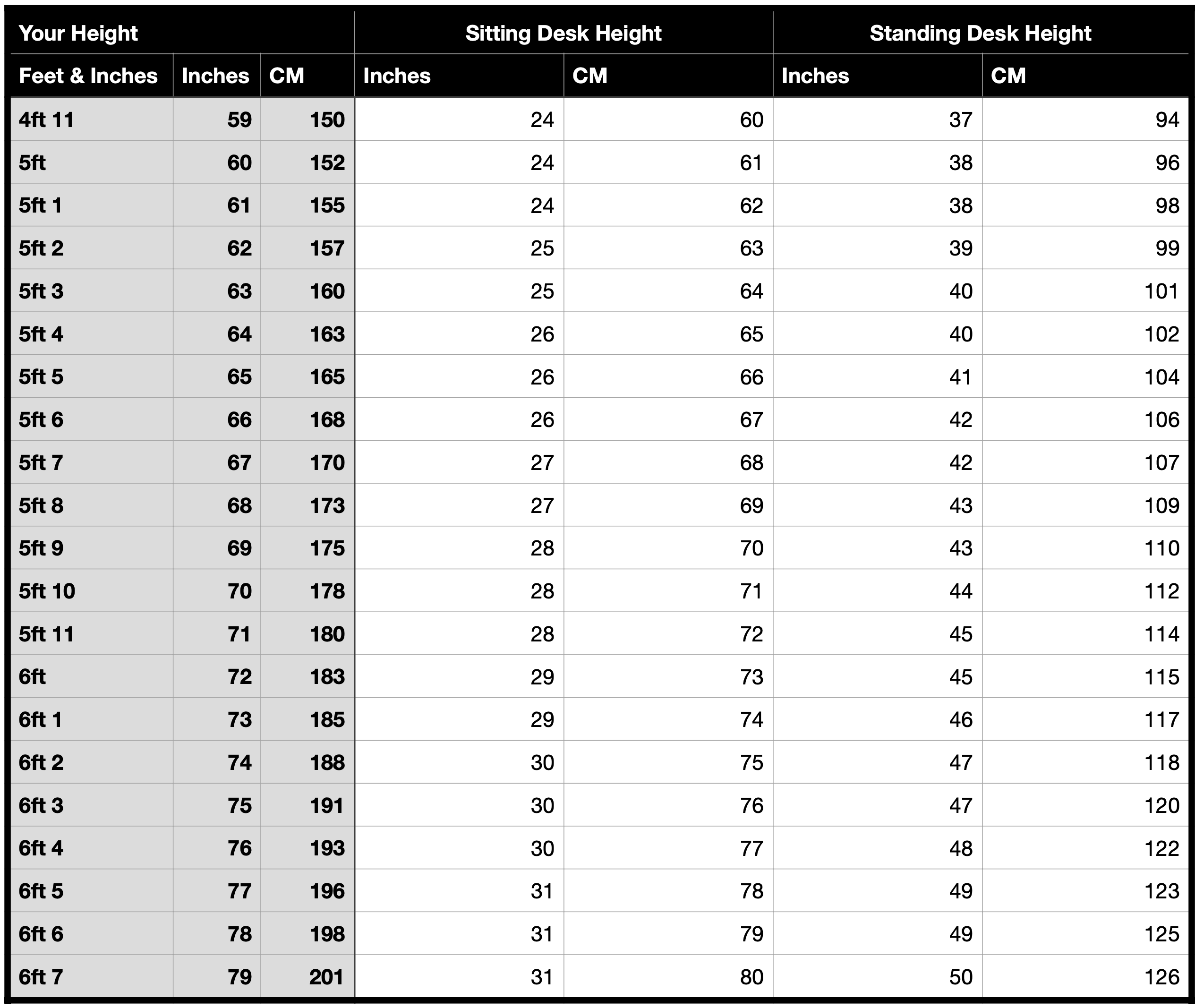
The Perfect Desk Height Guide
The quest for the perfect workspace is a journey filled with ergonomic considerations, and one of the most crucial factors is desk height. Whether you're setting up a home office, revamping your workspace, or just curious about how to make your existing setup more comfortable, understanding the optimum desk height for working is essential.
In this comprehensive guide, we'll delve into the science and art of desk height optimization. By the end of this article, you'll have the knowledge you need to create a workspace that not only supports your body but also enhances your productivity. And in doing so, take full advantage of your standing desk.
Why Desk Height Matters
Before we dive into the specifics, let's explore why desk height is so important. The height of your desk significantly affects your posture, comfort, and overall well-being during long hours of work. A desk that's too high or too low can lead to a range of problems, including:
1. Poor Posture
An incorrectly positioned desk can cause you to slouch, hunch over, or crane your neck. Over time, these postural issues can lead to chronic discomfort and musculoskeletal problems.
2. Fatigue
An uncomfortable desk height can lead to muscle fatigue, especially in your neck, shoulders, and back. This can result in reduced focus and productivity.
3. Reduced Productivity
When you're physically uncomfortable, it's challenging to maintain focus and efficiency. A properly adjusted desk can help you stay on task and work more effectively.
4. Health Issues
Prolonged periods of poor ergonomics can contribute to health problems, including back pain, carpal tunnel syndrome, and eyestrain.
Now that we understand the significance of desk height, let's explore how to find your optimum desk height.
How to Determine Your Ideal Desk Height
Finding your ideal desk height is a personal process, as it depends on several factors, including your height, the type of work you do, and your preferred working posture. Here's a step-by-step guide to help you determine the right desk height for your needs:
1. Measure Your Elbow Height
Begin by measuring the height of your elbows from the floor while your feet are flat on the ground. To do this:
- Sit in a chair that you find comfortable for work.
- Relax your shoulders and place your arms at your sides.
- Bend your elbows at a 90-degree angle.
Measure the distance from the floor to your elbows. This measurement is a good starting point for your desk height.
2. Consider Your Monitor
If you use a computer, your monitor's height also affects your desk setup. Ideally, your monitor should be at eye level, and the top of the screen should be just below eye level. You can achieve this by using a monitor stand or an adjustable monitor arm.
3. Choose Your Desk
Select a desk that allows for customization or has adjustable legs. This way, you can fine-tune the height to match your measurements.
4. Set Up Your Desk
With your desk in place, adjust the height so that your elbows are at or slightly above the desk surface when you're seated. This ensures that your arms are in a neutral position and can comfortably reach your keyboard and mouse.
5. Test Your Setup
Spend some time working at your newly adjusted desk. Pay attention to your comfort, posture, and any discomfort or strain you may experience. Make small adjustments as needed to achieve the best fit.
Additional Tips for Ergonomic Success
To further enhance your ergonomic workspace, consider these additional tips:
1. Use an Ergonomic Chair
Invest in a chair that provides proper lumbar support, adjustable armrests, and a comfortable cushion. An ergonomic chair complements your desk setup for maximum comfort.
2. Take Breaks
Regardless of how well your desk is set up, taking regular breaks to stand, stretch, and walk around is essential for maintaining good health and productivity.
3. Anti-Fatigue Mat
If you're using a standing desk, consider placing an anti-fatigue mat under your feet. This can help reduce discomfort and fatigue during long periods of standing.
4. Lighting
Ensure that your workspace is well-lit to reduce eye strain. Position your desk so that natural light is available but doesn't cause glare on your monitor.
In Conclusion
Your desk height is a critical element in creating a comfortable and productive workspace. By following the steps outlined in this guide and paying attention to your body's signals, you can fine-tune your desk setup to optimize comfort and efficiency.
Remember that ergonomics are a personal matter, and what works for one person may not work for another. Regularly reassess your workspace and make adjustments as needed to ensure that your desk height and overall setup continue to support your well-being and productivity. With the right desk height, you'll be well on your way to a healthier and more enjoyable work environment.
